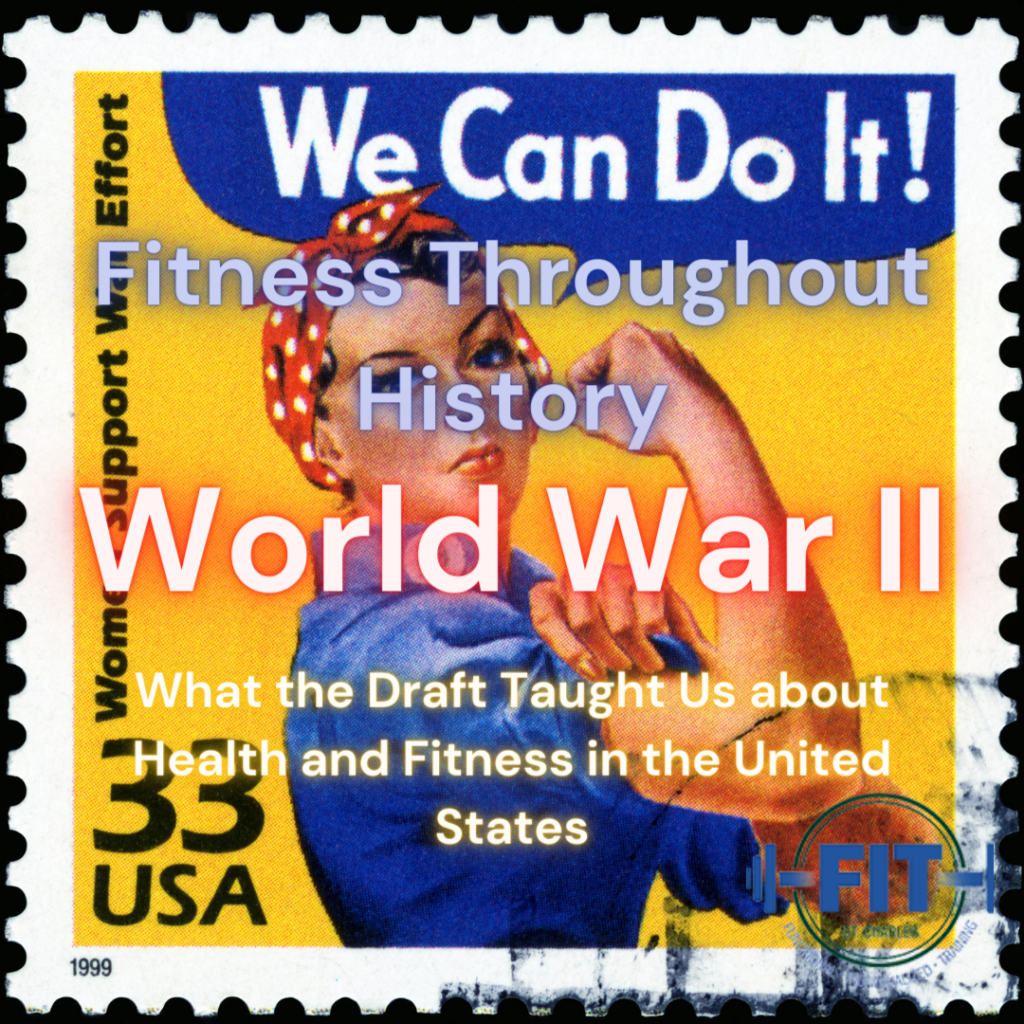
Reviewing the effects of war we don’t often consider, it becomes evident that war often brings about changes in how we view the overall health and fitness level in societies as a whole. And the events surrounding World War II in the United States were no different. Today we are going to discuss how WWII changed the US government’s view on the state of its citizens’ health and physical state in America.
As we noted last week, prior to the second World War, society as a whole was not as interested in exercise as they were during and before WWI. With the onset of the Great Depression, the overwhelming majority of society did not have the means or energy to dedicate time and effort towards improving their fitness levels. However, directly following WWII, the government, and subsequently the American people, shifted their focus back to structured exercise and healthier diets.
The United States entered World War II on December 7th, 1941. This led to one of the largest military drafts in modern United States history. All men between the ages of 18 and 45 were required to sign up for the draft. By the time the war was over, nearly 10 million men had been inducted to the military (although it is important to note that some did volunteer before they were drafted). When the war was over, it was reported that only half of the men who were drafted were physically fit enough for combat and were either rejected or given non-combat positions. This disturbing statistic got the attention of the US government, and things began to change.
An important contribution to fitness came from Dr. Thomas K Cureton during the 1940’s (who attended a University we will all recognize- the University of Illinois!) Cureton focused on the application of research to fitness, which improved exercise recommendations to individuals. He recognized the importance of regular exercise, and formulated tests to measure cardiorespiratory endurance, muscular strength, and flexibility, to name a few. The data he gained from this research led to new and improved guidelines for fitness programs, many of which we still rely on today. His recommendations later played a large part in government programs for public schools and afterschool programs.
Although it wasn’t until the 1950’s (which we will get to next week!) that the government began to implement new and improved programs for schools nationwide, the 1940’s were an important time in fitness history- as focus shifted back to our nation’s physical health, we again began to recognize the importance of a healthier, happier, and more physically fit society!
For those curious about how they would stack up against the men who were fit for combat, consider doing the WWII Fitness Test! The military used the following to determine whether someone was fit enough for combat during the WWII draft: pullups, squat jumps, pushups, situps, and a 300-yard run. More information on this can be found here : https://www.artofmanliness.com/health-fitness/fitness/are-you-as-fit-as-a-world-war-ii-gi/ .
